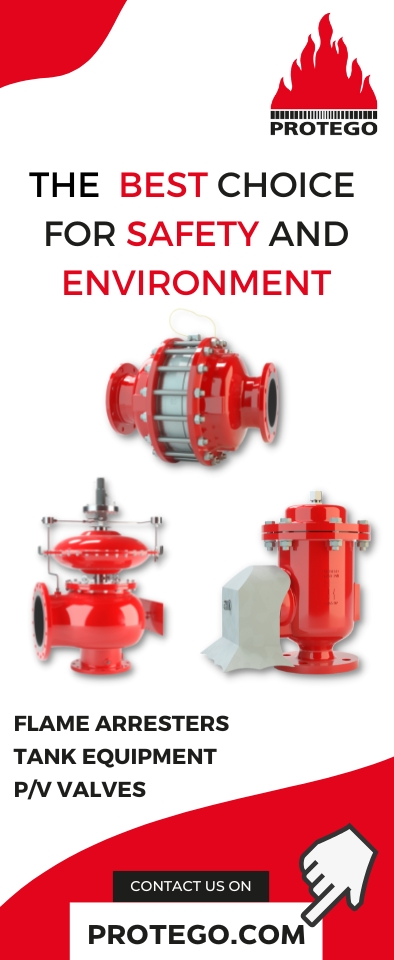As part of the Vopak Moda Houston project, EPC contractor Transtech Energy, which has over 30 years of experience in the design and construction of liquefied gas terminals and transloading facilities, was tasked with fabrication of the facility’s five pressurised 120,000 gallon bullet tanks. These tanks have a total storage capacity of 14,285 barrels for products such as propane or butane or other liquefied hydrocarbon gasses.
‘Typically bullet style tanks are built for aboveground installations, Mark Wenik, market director for terminals, power generation and cryogenics explains. ‘Around 95% of the installations we do are aboveground applications. But in this case Vopak Moda Houston wanted the tanks built for a mounded installation. By installing the tanks in a mound, it provides an additional layer of safety for the terminal. With a tank that is buried, there is a much lower risk of damage to the tank if there is a fire or thermal incident at a location. The mound also helps maintain the internal temperature and pressure of the product stored inside.
As part of their scope Transtech Energy also engineered and built the rail terminal. ‘When designing this, we had to ensure the rail access platform system was expandable to handle additional railcars for potential growth of the facility,’ says Wenik. ‘The initial design allows for the unloading of multiple railcars simultaneously, with potential for an equal number on the other side of the platform. The unloading arms swing from one side to the other which provides operational efficiency and minimized capex costs associated with the rail unloading system.’
Transtech Energy started the project in October 2019, with construction beginning in Spring 2020. The tanks, rail and export pumps and meter were commissioned in January 2022. Prior to beginning detail engineering, Transtech Energy conducted a study to determine the most effective solution for liquid transfer from rail to storage. Because of the nature of the product being transferred, pumps were not a viable solution.
‘Our experience has shown that using pumps to transfer product from a top mounted rail car with liquefied hydrocarbons leads to cavitation and pressure drops, which negatively impacts the performance of the pumps,’ Wenik says. ‘You begin to see diminished operational efficiency, which means it’s not possible to meet the required transfer rate. ‘Our recommendation was to use a series of reciprocating compressors instead,’ Wenik explains.
‘The customer initially had concerns about the use of compressors for the transfer of the NGL that the facility was built for. One of the constituent components of the NGL, for example, begins to polymerize once it reaches a certain temperature. As part of the engineering study we provided the clients with other users – US based and globally – of other customers that have successfully utilized similar compressors for the transfer of similar products without any operational or negative maintenance issues.’
With the project successfully complete and with the energy transition on the horizon, Trantech Energy is continuing to diversify its offering through their recent acquisitions and expanded capabilities to support the storage and utilization of cryogenic gasses such as LNG, argon, liquid oxygen, hydrogen and other industrial gases.
‘By continuing to expand our product offering of cryogenic storage solutions along with the associated transfer and processing equipment,’ Wenik explains. ‘We are able to provide turn-key engineered systems to our customers in the energy, aerospace, and air- separation industries.
For more information:
www.transtechenergy.com















